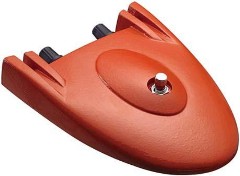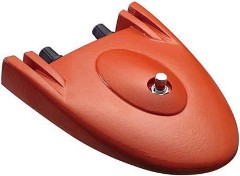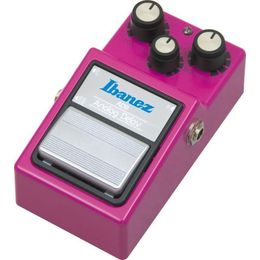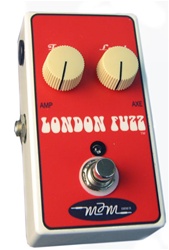 As one of the most sought after pedals of all time, the Roger Mayer Axis Fuzz has become an instant classic since Jimi Hendrix used it on his album Axis: Bold as Love. I remember the day I went to Moog Audio in Toronto, Canada to try out the pedal. I a/b’d the axis fuzz against many other fuzz pedals, such as the OX Fuzz, the Zvex Fuzz Factory, and the Fulltone ’70 Fuzz. Right off the bat, I knew the axis fuzz was a clear winner. Why, you ask?
As one of the most sought after pedals of all time, the Roger Mayer Axis Fuzz has become an instant classic since Jimi Hendrix used it on his album Axis: Bold as Love. I remember the day I went to Moog Audio in Toronto, Canada to try out the pedal. I a/b’d the axis fuzz against many other fuzz pedals, such as the OX Fuzz, the Zvex Fuzz Factory, and the Fulltone ’70 Fuzz. Right off the bat, I knew the axis fuzz was a clear winner. Why, you ask?
It’s quite simple. The axis fuzz has more textures, more depth, and more tonal variation. I was able to get a wide variety of distinctly different tones, just from the the two knobs on the pedal. One knob controls the volume output, and the other controls the fuzz/drive. My first instinct was to crank both knobs, and instantly I was in fuzz heaven. Infact it was so over the top, that my amp was feedbacking like crazy!
After playing some purple haze on my strat with an extended out-of-control solo, I decided I needed to calm things down a bit. I turned the fuzz knob pretty far down, so there was just a touch of fuzz, but kept the volume knob fairly high, around 3 o’clock. This put me into the chimy-ist, bell-like tone I’ve heard from an amp! I was getting amazing clean tones that had added texture from the touch of fuzz I had on. Also the guitar was more touch sensitive, letting me do hammer-ons and pull-offs with complete ease, while maintaining that sweet clarity. I now realize how Hendrix got some of his great sound clean tones. It was crazy to hear a marshall amp have fender-like cleans, but with more mid-range.
I decided it was time to get back to fuzz mayhem. I set the knobs high, but kept my guitar volume low. I was surprised how clean the tone was with my guitar volume down, and as I turned it up, it just got dirtier and dirtier. As I got into really fuzzy territory, I could get some great harmonics, sustain, and controlled feedback. The best is when you bend a really high note with plenty of vibrato, and wait for it to change into a screaming upper harmonic feedback tone. What a great way to end a song. My final thoughts on this pedal.. amazing!
Here are some helpful hints that will help you use the Roger Mayer Axis Fuzz better. Since it is sort of an instrument in itself, there are a few things you need to learn to get it working the way you want it to:
1) Crank your amp! This fuzz needs a cranked amp in order to sound good! Otherwise the fuzz with sound thin and shrill, which is very unpleasant to the ears. If you can’t go too loud, try stacking the fuzz with an overdrive or preamp pedal.
2) As mentioned, control the fuzz with your guitar’s volume pot. This will ensure the smooth transition between rhythm and solos.
3) Tweak the pedal a bit and find a great setting that works with your rig.
4) Use a strat! Single coils seem to work best with this fuzz. In addition, having a whammy bar just adds to the fun. Dive bombs become super powerful with the axis fuzz.
5) Let your guitar sing. Hold notes longer with the fuzz while using vibrato. With the extra sustain on tap, you can really fill the space, and the vibrato will help add some nice overtones.
If you haven’t already played an Axis Fuzz, try it out. You will not be disappointed! View the Axis Fuzz on Amazon.
Roger Mayer Axis Fuzz Sound Clip (Recorded on iPhone)


